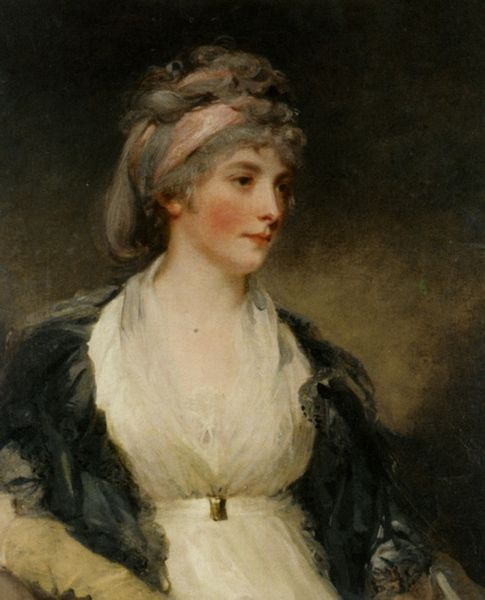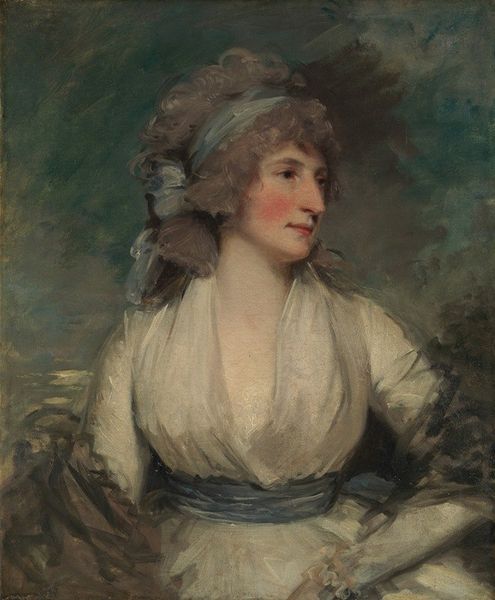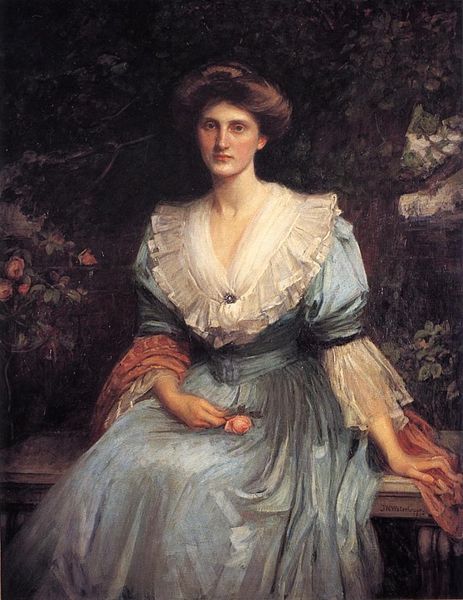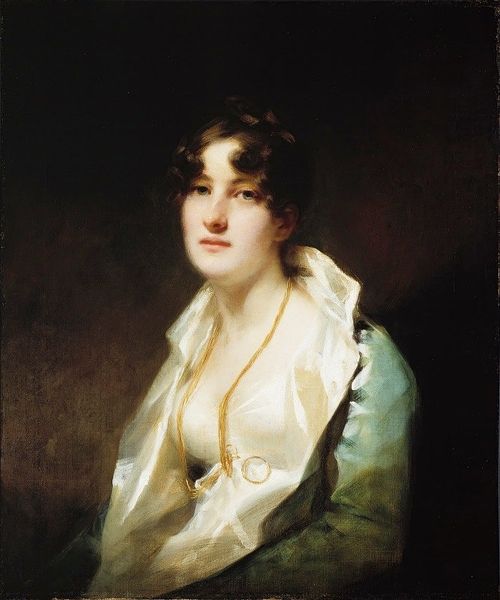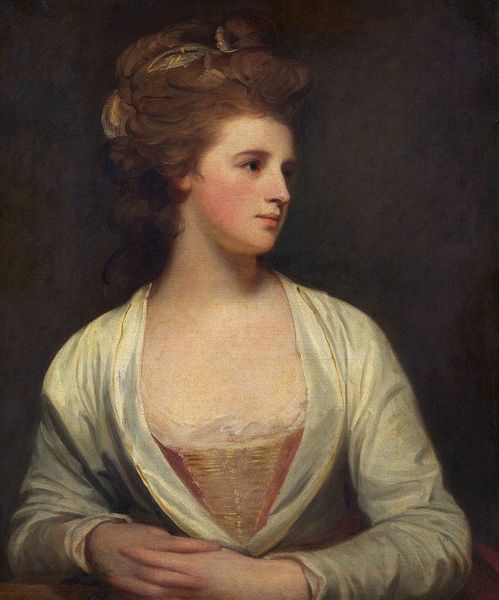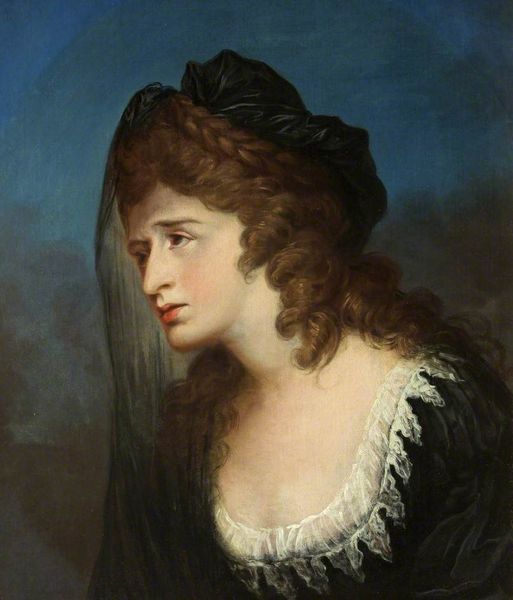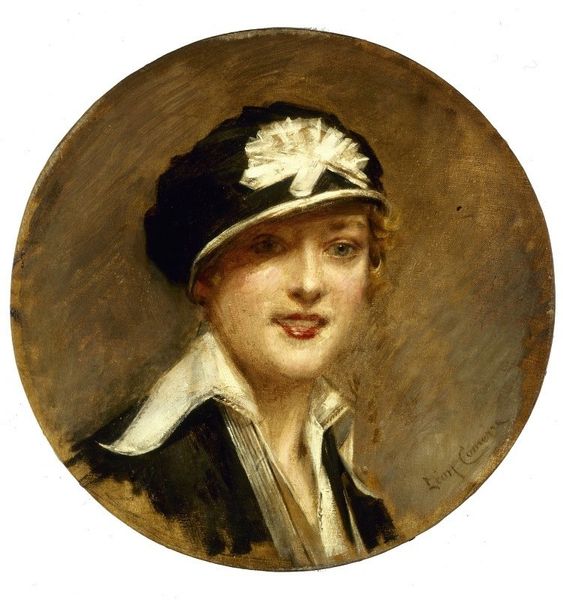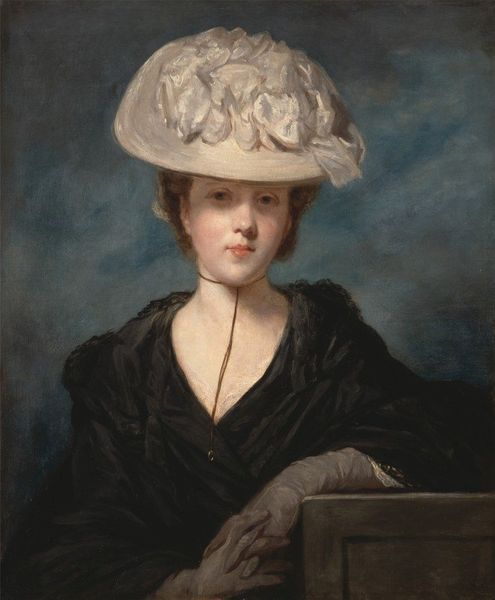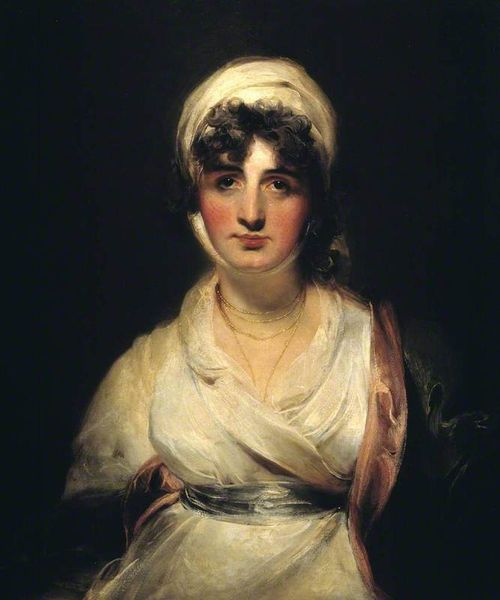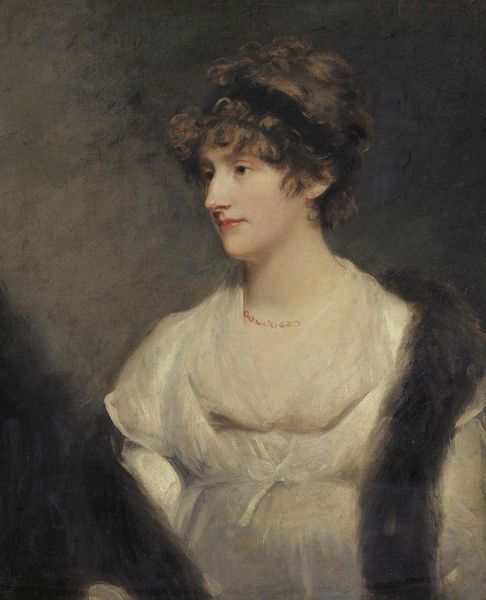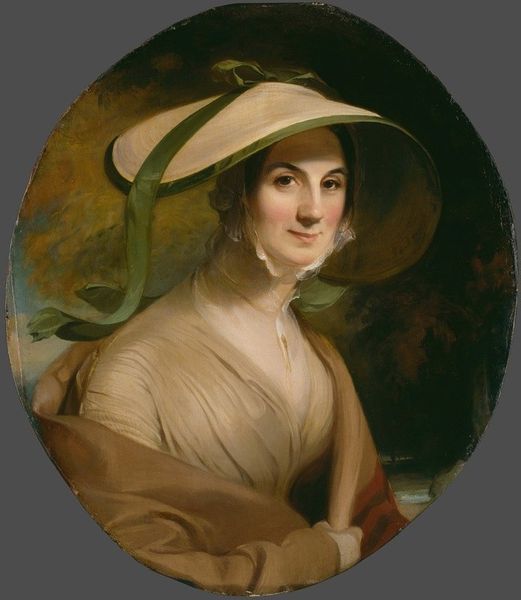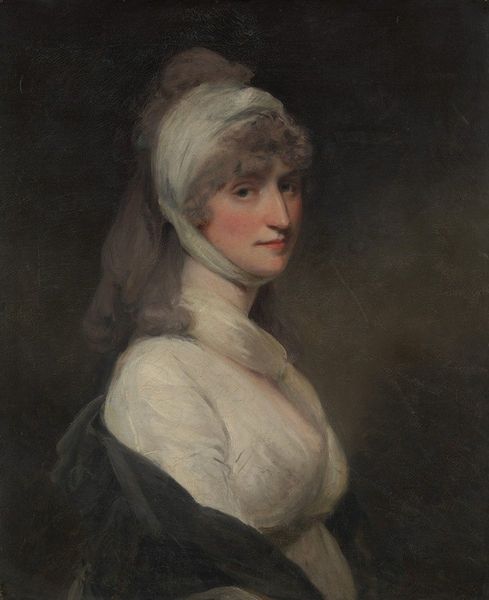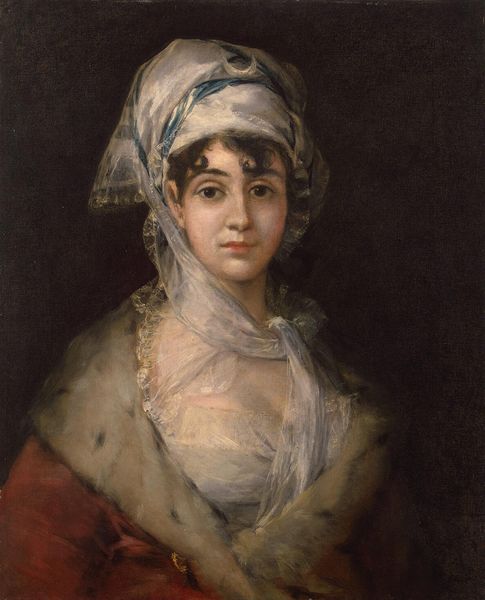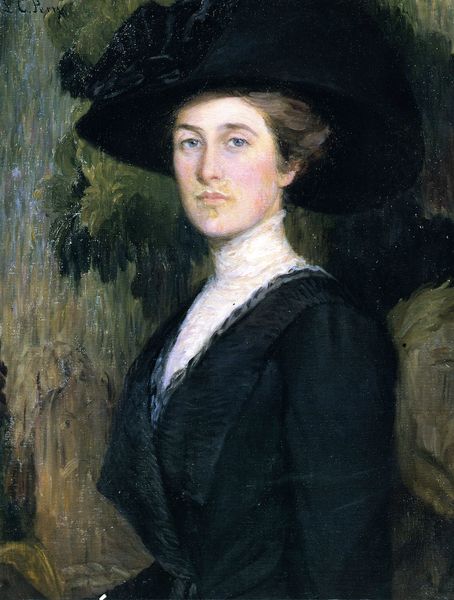
painting, oil-paint
#
portrait
#
painting
#
impressionism
#
oil-paint
#
figuration
#
romanticism
#
genre-painting
#
academic-art
Copyright: Public domain
Curator: Before us hangs "Young Woman in a Hat," an oil painting by Albert Lynch. Immediately, what grabs you? Editor: The texture! The fabric of the hat, the almost palpable weight of that black bow. It feels so tactile, almost like I could reach out and touch it. Curator: Lynch, deeply influenced by Impressionism and Academic art, positions this young woman within a specific societal context. What can we unpack from her gaze, her attire? It suggests narratives around class, beauty standards, and the gaze itself. Editor: And the gaze seems both innocent and knowing. It's fascinating how the artist rendered her skin; it looks so smooth. I'm thinking of the paints used, and their source – what kind of labor extracted the pigments to achieve this particular effect? It's important to look beyond the beauty and into the industrial side of things. Curator: Precisely! Think about the social implications. A woman being adorned, gazed upon, but also the means by which her representation is made possible through raw materials and, labor practices within that era. How does this contribute or subvert ideas regarding femininity at the turn of the century? Is there an implication for where she exists in society by depicting her in this fashion? Editor: Right. And let’s not forget the role of the hat itself, a crafted object acting as both adornment and symbol. A signifier that connects us directly to consumption habits, available resources, manufacturing—all tied into the image’s power. Curator: I find myself reflecting on the inherent tensions and contradictions presented. On one hand, we observe idealized beauty. But when we shift focus to the materials that constitute the piece, or the implications this holds for a larger audience, those seemingly passive observations begin to challenge our preconceptions and expectations regarding portraits of this time. Editor: Absolutely, viewing the materiality adds crucial context. It reveals not just what is depicted, but how it was created and consumed within a wider network of industry, commerce and social dynamics. It goes beyond a single person depicted to show an entire way of life. Curator: Looking at it with that critical awareness definitely reshapes my viewing. It creates necessary conflict and adds new dimensions to the figure's social placement and purpose within that specific timeframe. Editor: It prompts questions rather than just providing aesthetic pleasure and historical documentation!
Comments
No comments
Be the first to comment and join the conversation on the ultimate creative platform.
